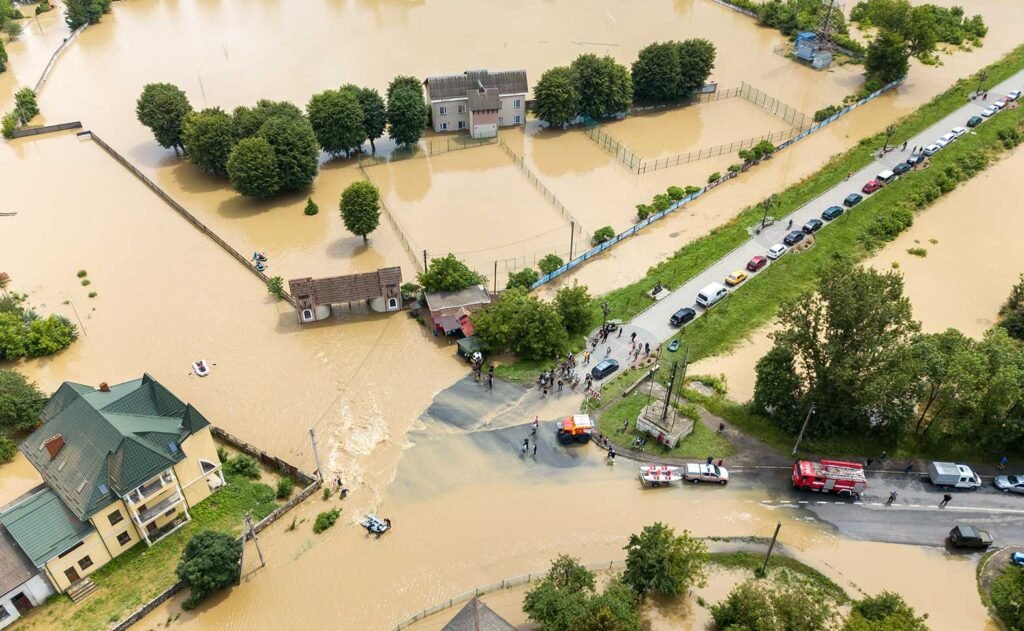As climate change accelerates, its effects are no longer distant concerns. Floods, droughts, storms, and rising temperatures are becoming everyday realities that impact communities and economies. For organizations, the challenge is clear: adapt or risk serious disruption. The good news is that resilience is possible, and it begins with a practical tool known as a climate risk assessment.
A climate risk assessment helps organizations understand how climate hazards could impact their operations, assets, supply chains, and people. More importantly, it enables strategic planning and adaptation. From global corporations to local businesses and government agencies, more leaders are turning to climate risk assessments to secure long-term success.
What Is a Climate Risk Assessment?
A climate risk assessment is a structured process used to identify and evaluate the potential impacts of climate change on an organization. It involves analyzing climate-related hazards, assessing exposure and vulnerability, and recommending ways to reduce risk.
There are two main categories of climate risk:
Physical risks, such as extreme weather events, sea level rise, and heatwaves
Transition risks, such as policy changes, technological shifts, and market transformations related to a low-carbon future
By addressing both types, organizations can prepare for the full range of challenges and turn risk into opportunity.
Why It Matters for Your Organization
1. Protects Physical Assets and Operations
Climate hazards can damage buildings, machinery, data centers, and transport routes. Flooded warehouses, power outages, or road blockages can shut down operations for days or even weeks.
A climate risk assessment helps identify which locations or assets are most vulnerable, so that protective measures can be put in place. This might include relocating critical infrastructure, reinforcing structures, or installing early-warning systems.
2. Supports Regulatory Compliance
Many countries are beginning to require companies to report on climate risks. Frameworks like the Task Force on Climate-related Financial Disclosures (TCFD) are becoming standard in global finance and business.
By conducting a climate risk assessment now, your organization stays ahead of regulations, avoids penalties, and demonstrates leadership to stakeholders.
3. Improves Financial Resilience
Investors and lenders are increasingly evaluating environmental risks when deciding where to allocate funds. Companies that manage climate risks are more likely to receive favorable loan terms, insurance rates, and investment offers.
Risk assessments also reduce the chance of unexpected costs, such as disaster recovery expenses, legal claims, or damaged inventory.
4. Builds Stronger Supply Chains
Climate disruptions often hit supply chains first. A drought may reduce raw material availability, or a storm could delay shipments. Mapping climate risks across suppliers helps organizations identify potential weak points and plan alternatives.
This builds continuity and trust with clients, partners, and communities.
"You can’t build resilience in the dark. Climate risk assessments shine a light on vulnerabilities and guide the path to adaptation."
The Climate Risk Assessment Process
At Ruane International Limited, we work with clients across sectors to conduct tailored climate risk assessments. The process includes the following steps:
Step 1: Define Scope and Objectives
We start by identifying which part of the organization to assess. It could be a facility, a business unit, or an entire enterprise. Goals are set to determine what needs protection, such as operations, financial health, or community relations.
Step 2: Identify Climate Hazards
We gather data on climate trends and extreme weather events relevant to the organization’s location. Hazards may include rising temperatures, reduced rainfall, coastal flooding, wildfires, or landslides.
We use local data, scientific projections, and global climate models to ensure accuracy.
Step 3: Analyze Exposure and Vulnerability
We examine how exposed the organization is to the identified hazards and how sensitive it is to their effects. This includes evaluating infrastructure resilience, employee safety, resource dependencies, and supply chain exposure.
For example, a business relying on imported goods from drought-affected regions would have higher vulnerability.
Step 4: Assess Risks
We combine hazard likelihood, exposure, and vulnerability to calculate risk levels. These are typically ranked on a matrix from low to very high. This helps decision-makers focus on the most pressing threats first.
Step 5: Recommend Adaptation Strategies
Based on the risk levels, we propose practical measures to reduce vulnerability. These may include:
Upgrading drainage systems
Revising procurement policies
Installing solar backup systems
Moving assets to safer locations
Training staff on emergency response
Engaging with local communities
Step 6: Monitor and Review
Because climate risks evolve, ongoing monitoring is essential. We help organizations build tracking systems and schedule regular reviews of risk levels and mitigation actions.
Common Challenges and How to Overcome Them
Limited Internal Expertise
Many organizations do not have climate scientists or risk specialists on staff. This is where expert partners like Ruane International Limited can help. We provide tools, data, and guidance to make the process clear and actionable.
Cost Concerns
While assessments require an investment, the cost of doing nothing is often far higher. Climate-related disasters can cause damage worth millions, not to mention lost productivity and reputational harm.
Furthermore, having a climate risk assessment can help you unlock grants, climate finance, or favorable insurance terms.
Data Gaps
In some regions, especially in developing countries, local climate data may be limited. We use satellite imagery, international databases, and scenario modeling to fill these gaps and build reliable assessments.
Long-Term Benefits
Climate risk assessments are not just for crisis management. They offer lasting advantages:
Better planning and budgeting
Increased investor confidence
Enhanced staff safety and morale
Stronger relationships with communities and partners
Alignment with sustainability and ESG goals
In other words, resilience pays off.
Final Thoughts
Climate change is reshaping the business landscape. Organizations that assess their climate risks today are better prepared for the uncertainties of tomorrow. They are more agile, more informed, and more attractive to funders, clients, and employees.
At Ruane International Limited, we are committed to helping you understand your climate risks and build smart, sustainable strategies to manage them. Resilience is not just about surviving, it’s about thriving in a changing world.




